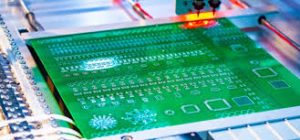FR4 has for quite some time been the principle material for creation such electronic sheets and made an awful name for Flame resistant 4 parcels. Now, however, as technology has advanced, we are beginning to see the limitations of FR4, especially with respect to high-frequency applications, forcing engineers to look at other materials. This article dives into the top (non-FR4) rigid PCB materials used today and their applications.
High-Frequency Laminates
High-frequency laminate materials, such as Rogers 4350 and Taconic TLY-5, are some of the other popular FR4-substitutes. These materials have been developed with high-frequency applications in mind, with low dielectric constants and loss tangents. Rogers 4350, for example, has a dielectric constant of around 3.48 at 10 GHz, much lower than the 4.5 of FR4. It also means a lower dielectric constant, which gives better signal integrity for high-speed designs.
Polyimide Boards
A different option is polyimide boards which can work at temperatures up to 260 degrees Celsius. This makes them perfect for high-temperature applications such as aerospace and military electronics. It has excellent chemical resistance and very good mechanical strength, making it well-suited for the toughest of environments.

Metal Core PCBs
Customers may choose a metal core PCB (MCPCB) for applications in which efficient heat dissipation is crucial. They contain a metal lip core, usually aluminum, or copper that spreads heat away from critical elements, thereby avoiding yielding shortcomings. Insulating material and metal is used in manufacturing MCPCBs which are integral in LED lighting systems and high-power transistors where the management of thermal load is vital.
Ceramic PCBs
Due to the fact that ceramic PCBs offer unparalleled thermal conductivity and high near-DC frequency performance they are ideal for sophisticated electronics. Very good electrical insulation is possible with ceramic materials, even at temperatures up to 350 degrees Celsius. This has an electrical conductivity of almost 24W/mK, several times greater than the dielectric thermal conductivity of FR4's 0.25W/mK. This is especially advantageous in applications such as automotive electronics, which require high temperature performance and highly reliable solutions.
Transitioning from FR4
More frequently than not, a switch from FR4 to one of these costs performance in exchange for cost. For example, high-frequency laminates may be many times more expensive than FR4, but they provide characteristics that FR4 cannot deliver in many applications. Designers need to understand the thermal properties, operating frequencies, and the ruggedness of their projects to select the best material that suits the required conditions.
Each alternative material is advantageous in its own way and is suitable for various electronic applications. A substrate material is a base material that provides mechanical support to the electronic components and impacts functionality and life of a final product. MaterialThe choice of material has to be matched to the environmental conditions and the electrical characteristics of the application to ensure highest performance and reliability.